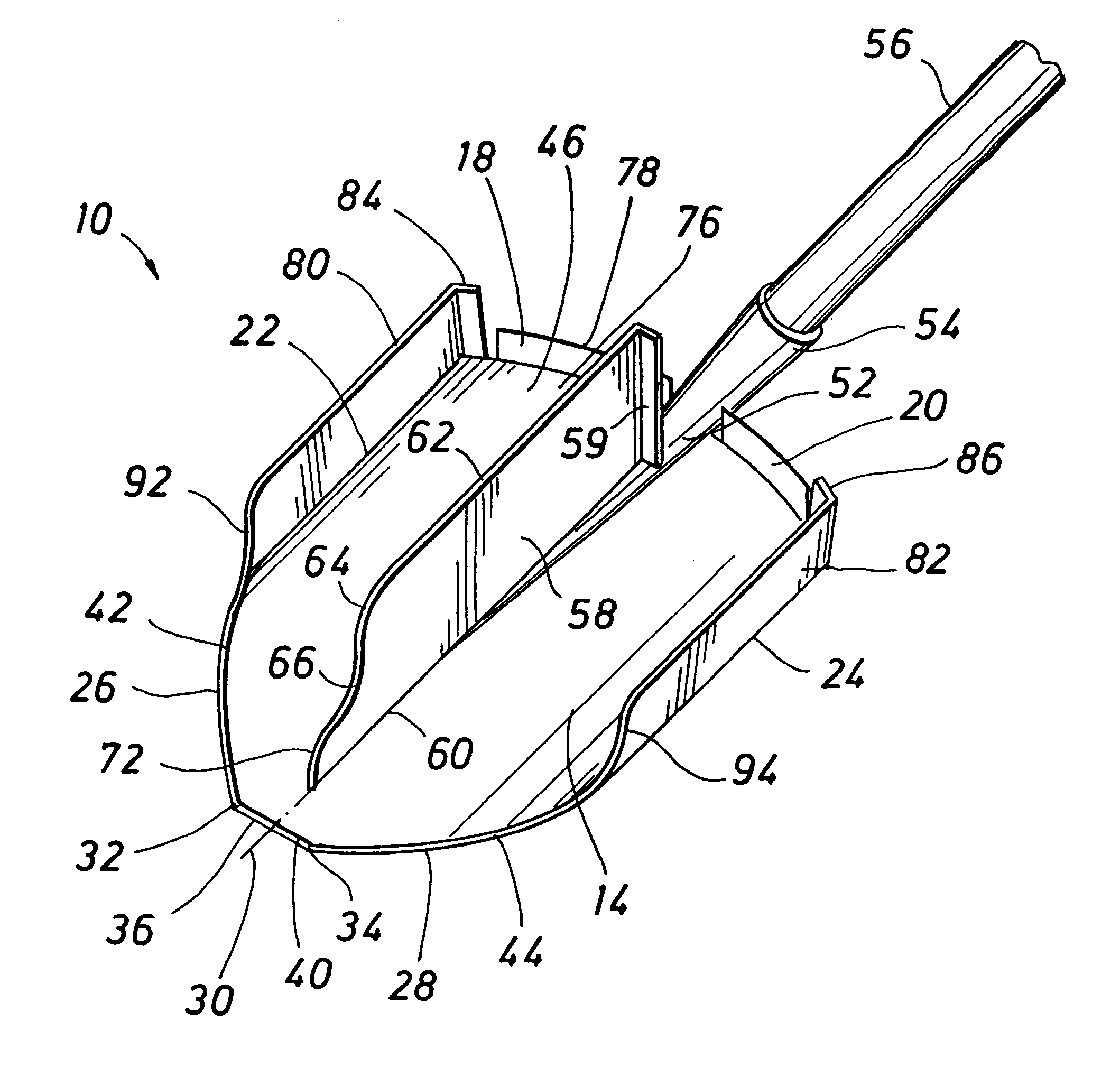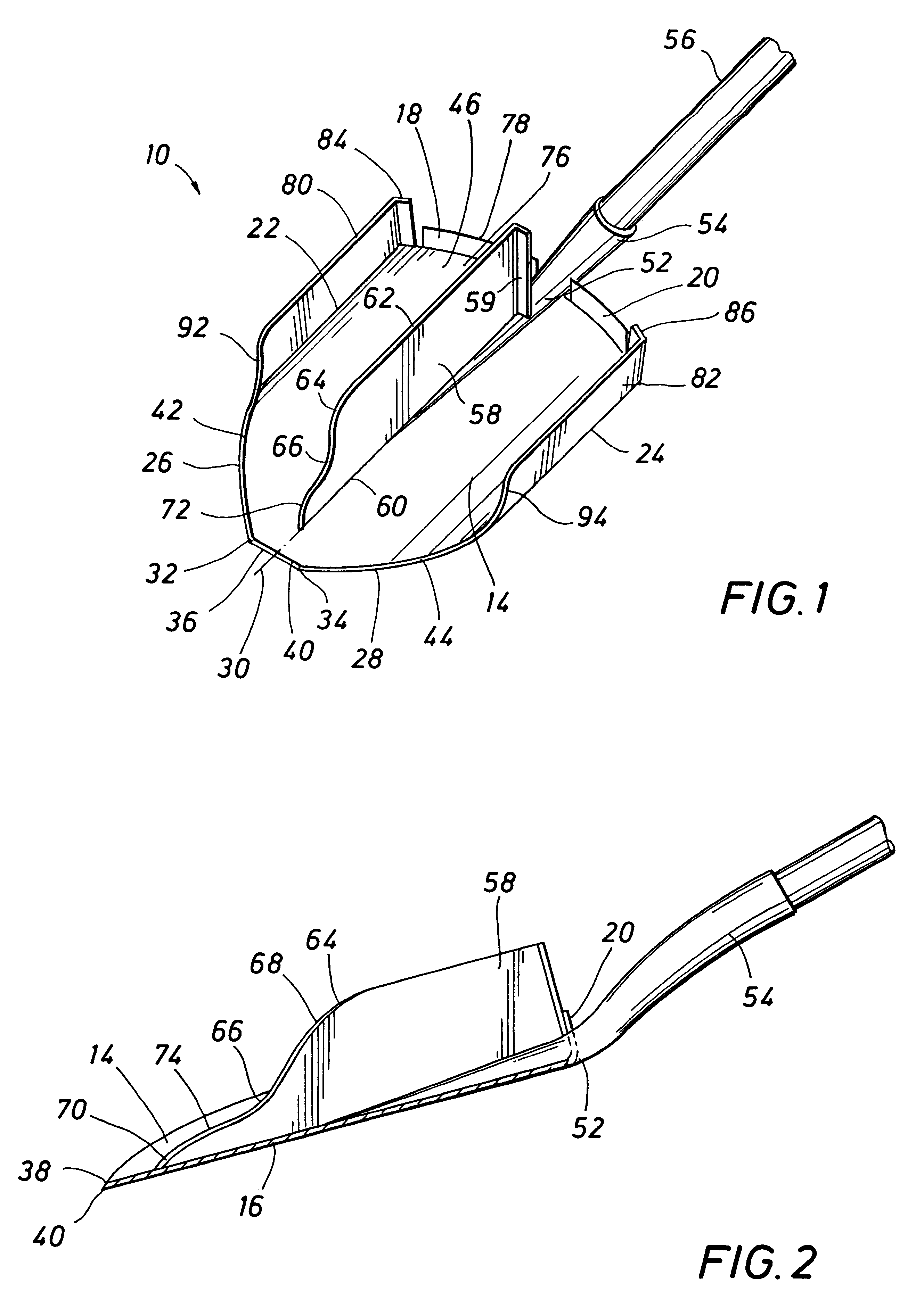Root cutting shovel
a shovel and root technology, applied in the field of manufactured shovels, can solve the problems of loss of shovel load, wear and dull cutting edge, inability to cut through tree roots of significant dimension,
- Summary
- Abstract
- Description
- Claims
- Application Information
AI Technical Summary
Benefits of technology
Problems solved by technology
Method used
Image
Examples
Embodiment Construction
Referring now to the drawings, a shovel adapted for manual handling and being manufactured according to the principles of the present invention is shown generally at 10 and having a shovel blade 12 that is generally of the "round point" type in that the blade is curved and defines a front smoothly curved concave blade face 14 and a rear smoothly curved convex blade face 16. Typically the shovel blade is formed from relatively thin sheet metal, such as hardened steel although it may be forged, stamped or otherwise formed from any suitable metal or non-metal stock. At the upper end of the shovel blade 12 is provided foot engaging elements 18 and 20 which may conveniently take the form of flanges bent from the sheet stock of the shovel blade and oriented in substantially normal relation with the front and rear blade faces. The foot engaging flanges typically correspond with the curvature of the blade faces, but are preferably significantly wider as compared to the foot engaging flanges...
PUM
 Login to View More
Login to View More Abstract
Description
Claims
Application Information
 Login to View More
Login to View More - R&D
- Intellectual Property
- Life Sciences
- Materials
- Tech Scout
- Unparalleled Data Quality
- Higher Quality Content
- 60% Fewer Hallucinations
Browse by: Latest US Patents, China's latest patents, Technical Efficacy Thesaurus, Application Domain, Technology Topic, Popular Technical Reports.
© 2025 PatSnap. All rights reserved.Legal|Privacy policy|Modern Slavery Act Transparency Statement|Sitemap|About US| Contact US: help@patsnap.com



